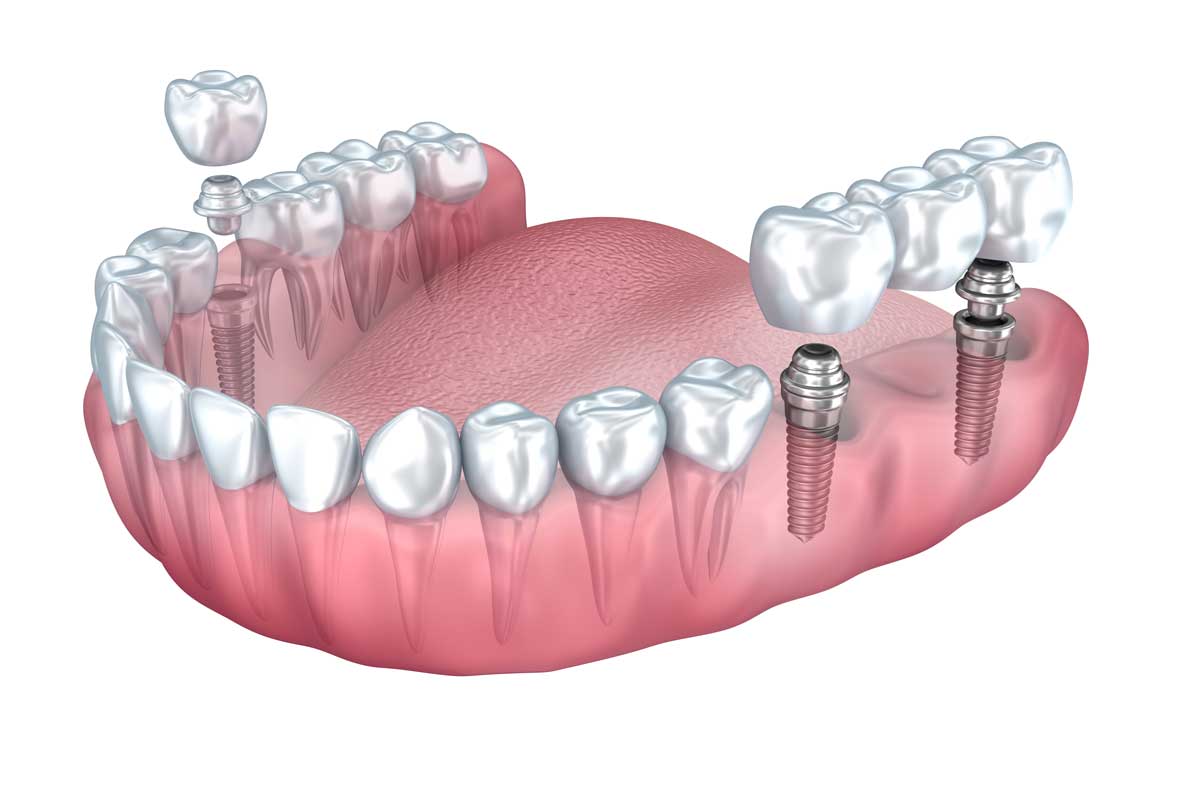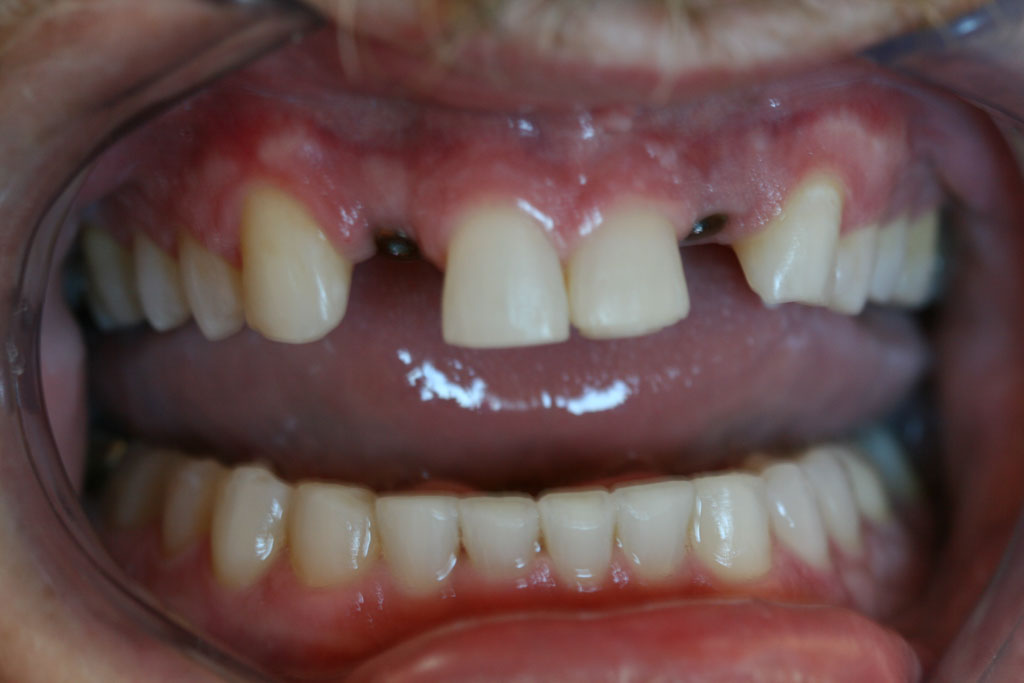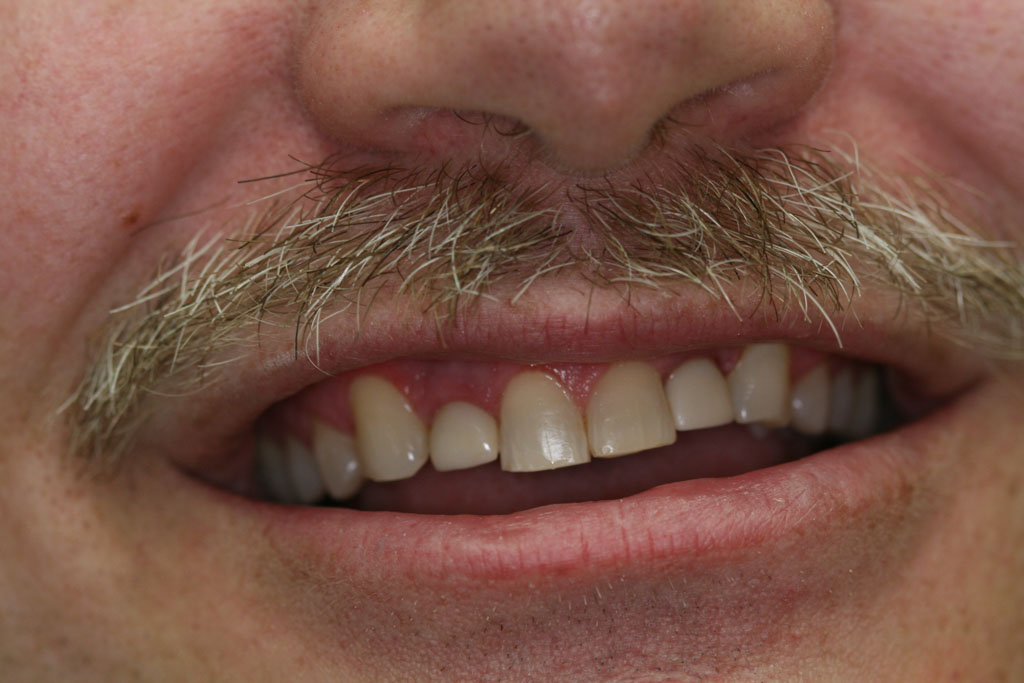

Imagine a tooth-shaped metal cylinder made of Titanium. This is a very strong, yet inert metal that would be placed into the bone socket where a natural tooth is removed. After a period of time, this dental implant is ‘uncovered’ which makes the top aspect ready for restoration with a crown. The implant, with a crown attached, becomes the replacement tooth and a patient can enjoy chewing comfortably. You can see dental implant before and after pictures in our smile gallery.
You see, when bone is not stimulated with chewing, it actually begins to melt away. This is why you see people with missing teeth, having the appearance of a sunken face. Chewing on a tooth keeps the supporting bone ‘dynamic’ and promotes healthy turnover of cells. Left un-stimulated after a tooth is lost, bone will slowly disappear. That is one of the major benefits of an implant over a ‘bridge’, to replace a missing tooth.
Of course, placing an implant is a surgical procedure and has to be performed by an experienced surgeon. Patients are evaluated for any medical conditions and the surgeon may request specialized radiographic images including 3D images that allow accurate visualization of the patient’s anatomy.
Implants are an exciting area of our profession. So many folks, who have suffered for years with missing teeth and dentures, now have options they never thought possible. These implants not only support individual crowns, but they can help retain a denture in place. Implants are a heaven-sent for anyone who has to dollop denture adhesive into his or her denture to keep it from sliding around. And again, using implants with the denture will help to preserve bone.


